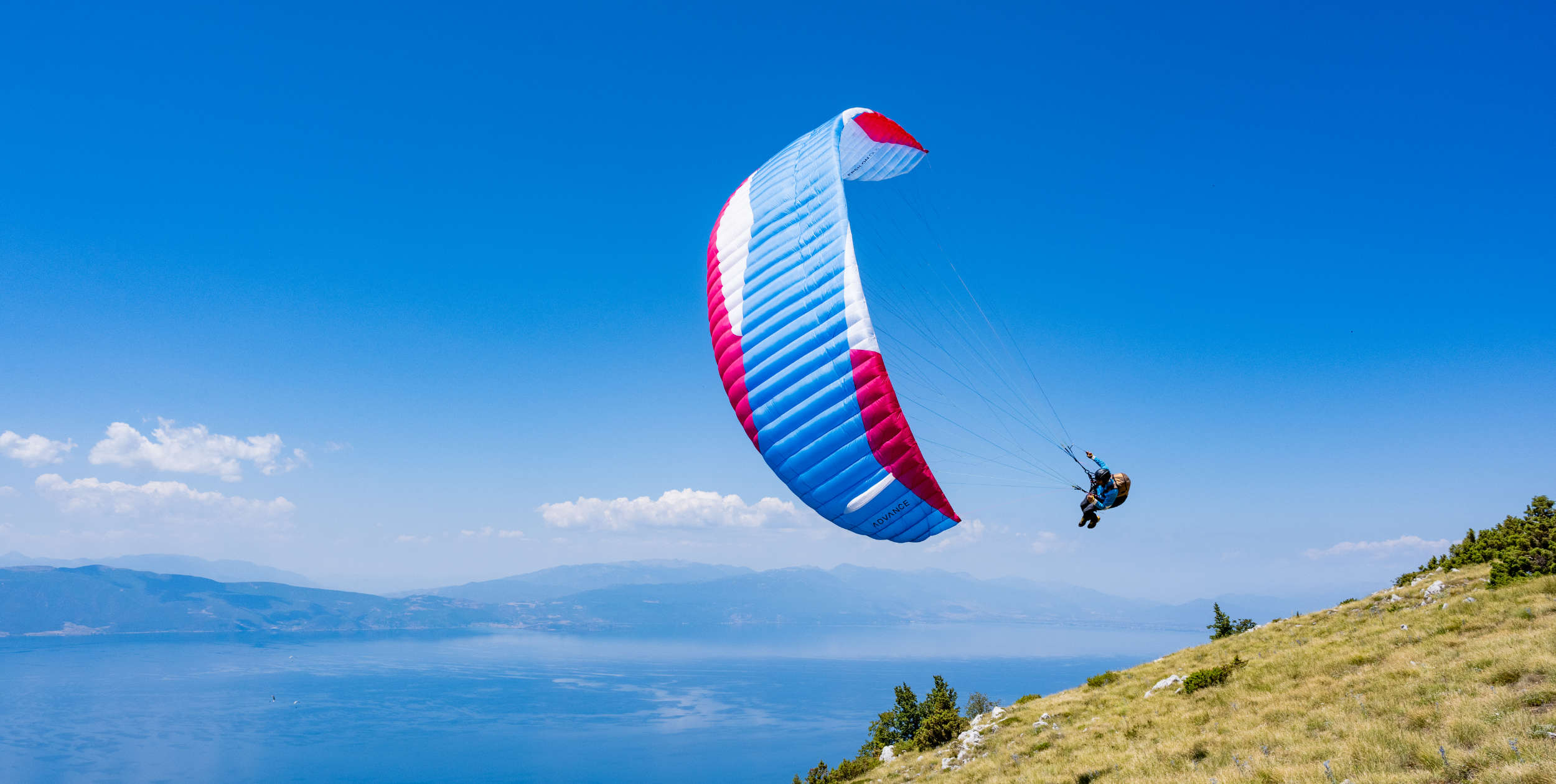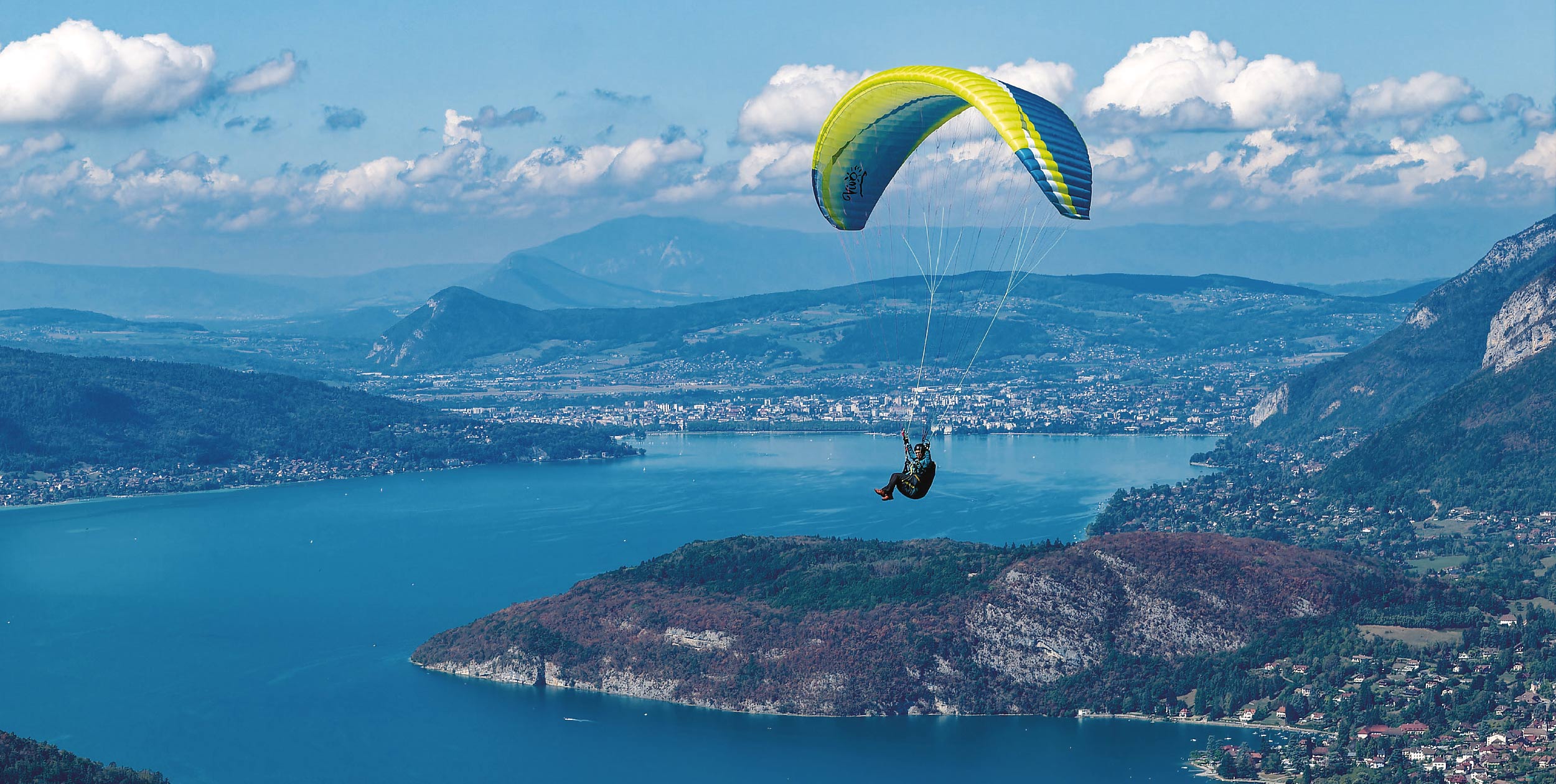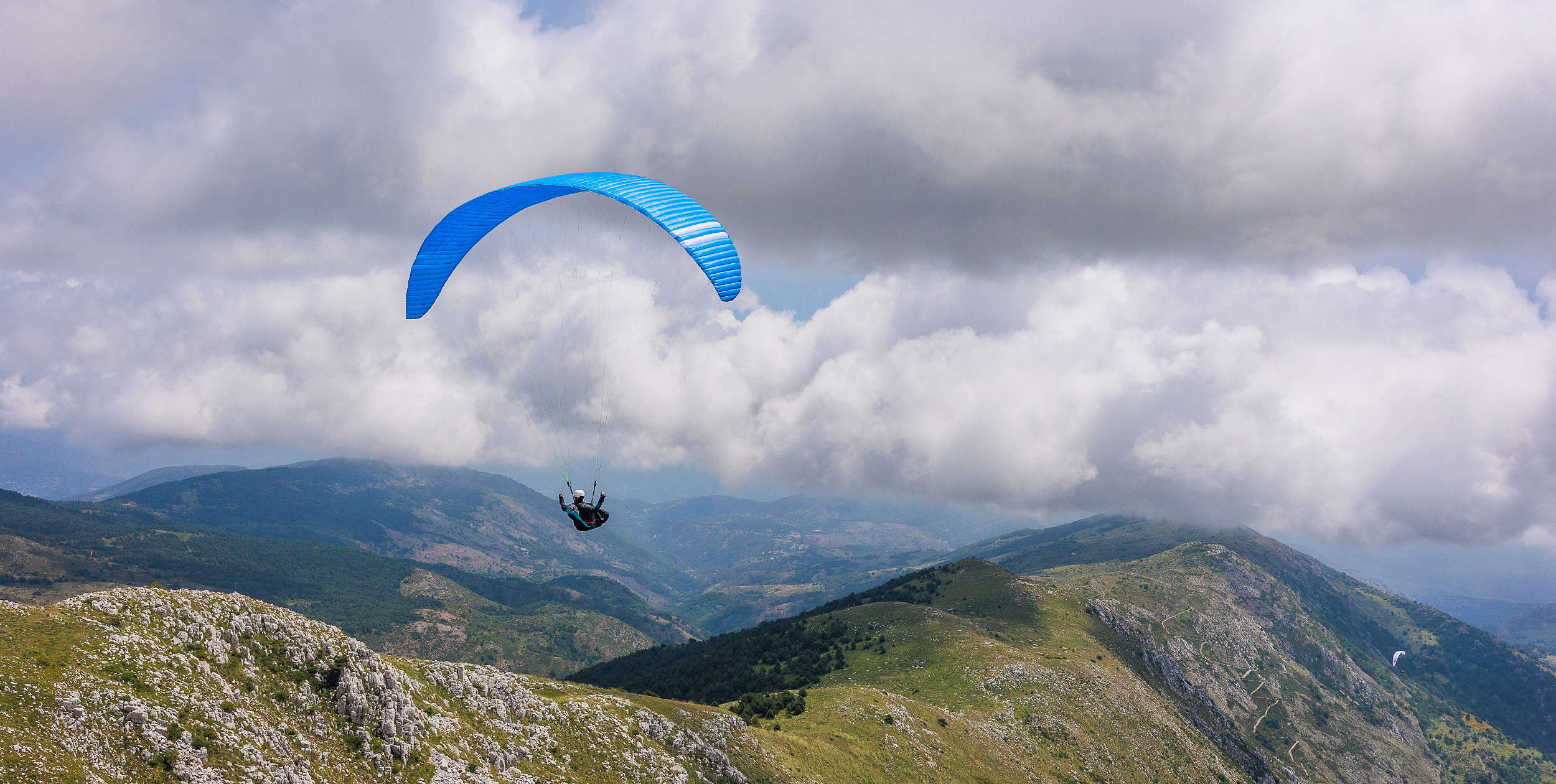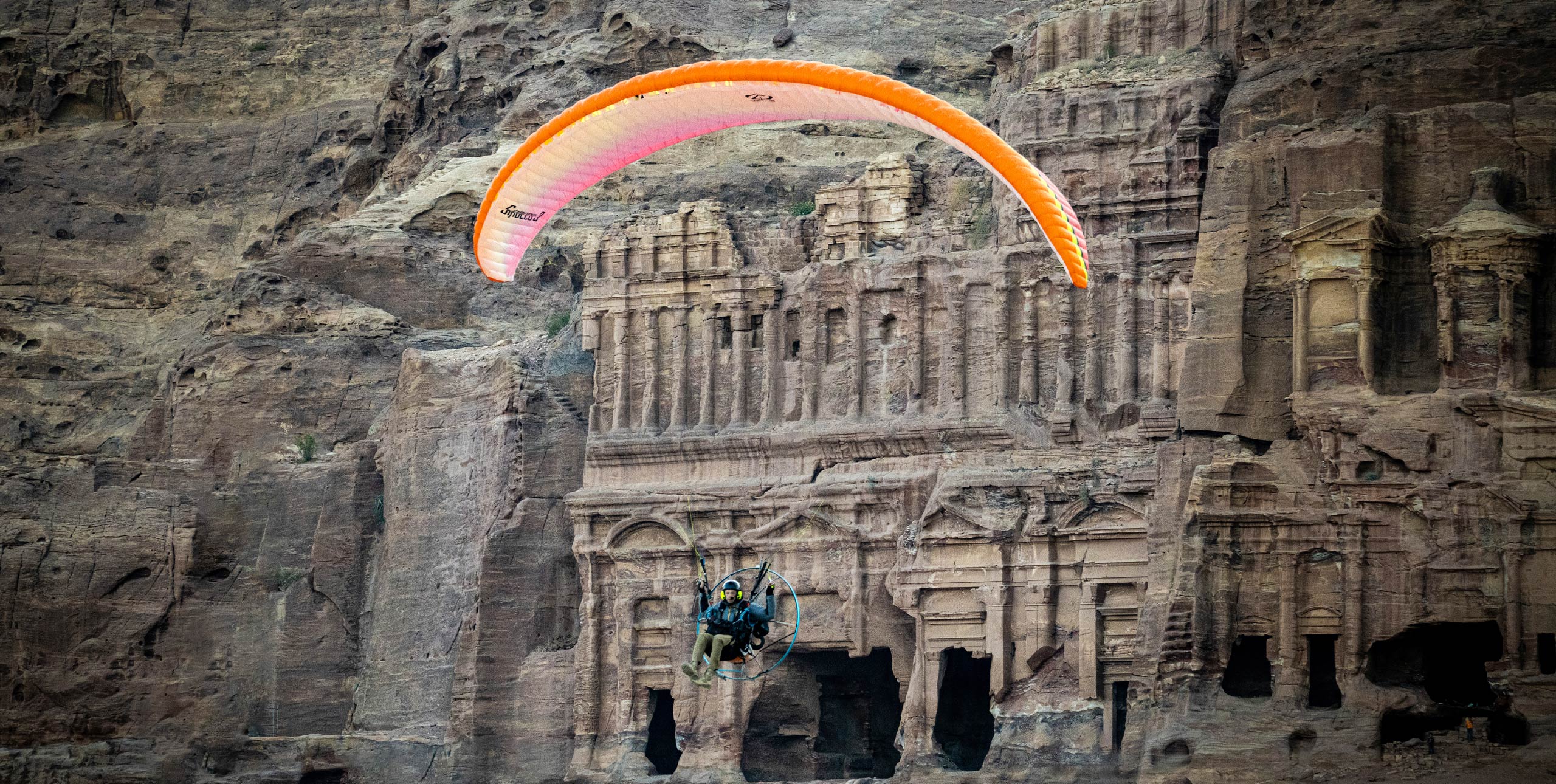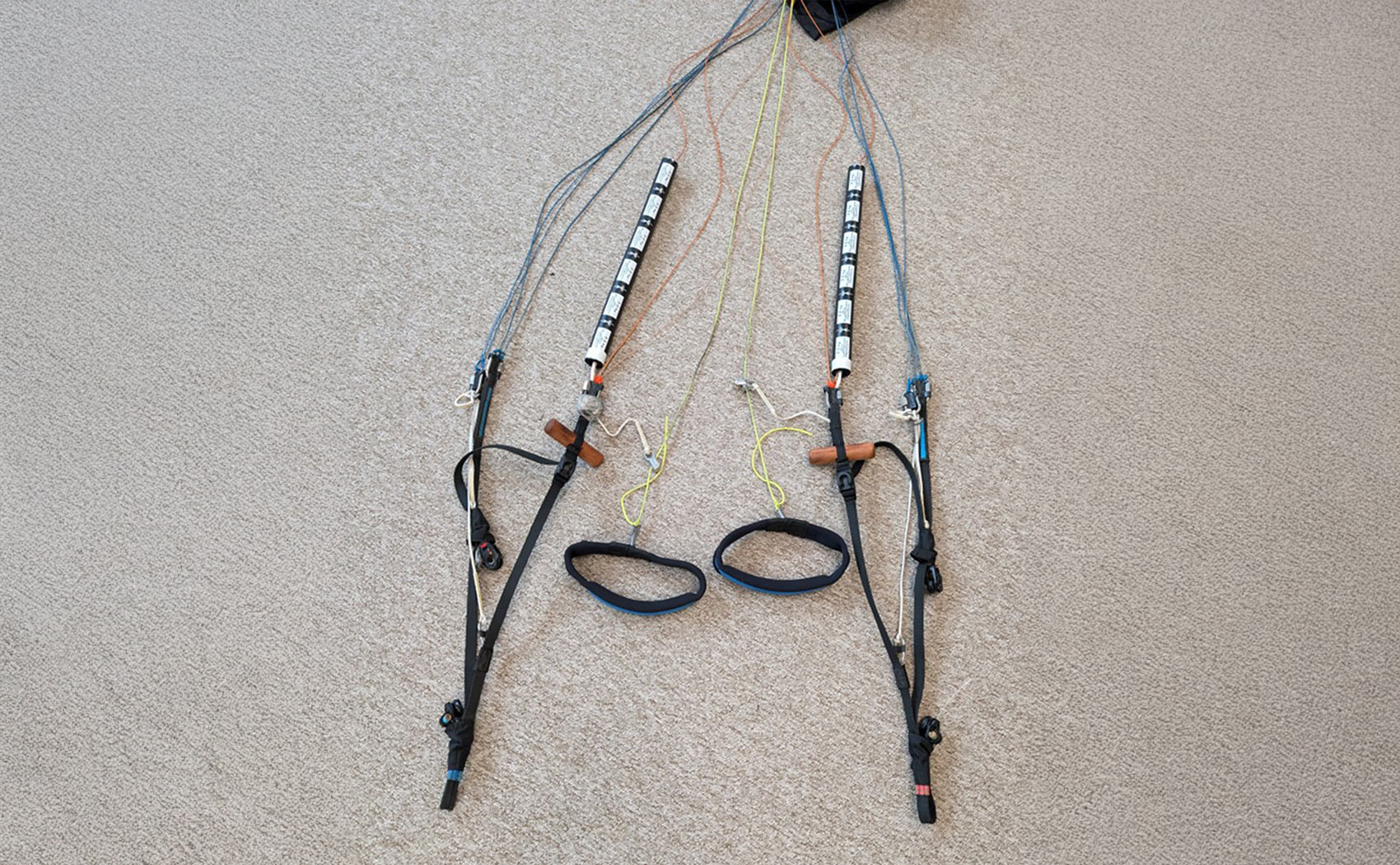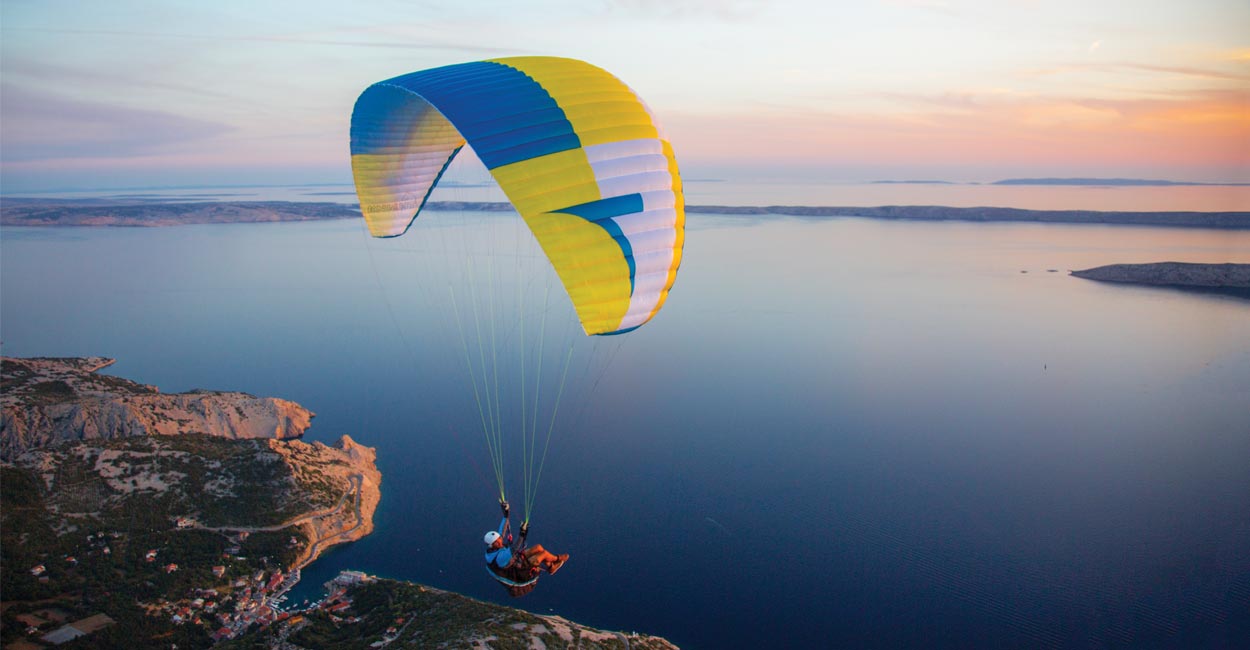
THE VALIC BROTHERS burst onto the paragliding scene with their competition results in the early 2000s. However, well before that they had a passion for the air. As kids they made their own remote-control gliders and planes. They then became world-record breaking solo paraglider pilots. Based in Slovenia, they now have a strong R&D team with constantly evolving software and a massive variety of flying sites from spectacular and world-record breaking ridge runs to the winter thermals of Lijak.
Design brief
The Knight from Triple Seven is designed to fill the gap between the Pawn (EN A and Rook EN B). While the step from A to B is often a straightforward one, Triple Seven felt there was too big a gap between their lower-end wing and their XC-oriented B wing. The difficulty in this segment is that people want something easy to transition to from their first wing, but as they progress they start to want some handling and XC performance. Manufacturers also have to please pilots who are trading down and are used to the immediate handling of EN-C wings. This kind of project is complex. It is not just a case of adding a sports exhaust and a spoiler to the lower-end wing! The features taken from Triple Seven’s wings would only be added if they made sense and if the security and comfort could be maintained.
Triple Seven made many prototypes and made the most of the all-year flying in Slovenia. The brothers want to give their wings some personality, even in the EN-B class. I typically fly EN-C wings such as the Gradient Aspen 6 (review here). However, I like immediate handling and feedback no matter what class I am flying. Would I like the Knight or would I fall asleep, like I usually do when I play chess?

First impressions
My first 20 minutes or so with the wing were pretty frustrating, but that was partly my fault. The wing arrived with the line-set pleated tightly and very neatly. After failing this intelligence test I ended up with a spaghetti fight of lines. The air was blue with Scottish swearing. Once I sorted out that mess the lines looked pretty good.
The glider is a three-riser design with big-ears risers and no rear-riser handles. For a B the lineset looks very efficient and clean. The sheathed A and B lines are brightly coloured and the coated C-lines are brown/black. The C’s tended to vanish when the wing was laid down on grass but were easy to sort out with a few test inflations. They don’t get into the same tangle as some finer guage “dental floss” lines can.
The 13mm risers are narrow enough to be efficient without being too fiddly when wearing winter gloves. The brakes are secured, most of the time, by magnets. I still prefer press-studs, but then I can be old fashioned. These magnets at least have some slots in them to reduce the number of detachments. There are no brake pulleys, only rings. The rings are great as there are no pulleys squeaking as you fly. These felt as if they had a little more friction than others I have flown with but worked well.
Getting into the air
Building a wall is easy, with some use of the C-risers and a step or two towards the wing to keep the wall pressurised but low. A little ground handling showed that the wing was very eager to rise but did not overshoot unless I was really heavy handed. The brakes on the wing felt a little long. I flew with a small wrap and to stay on the ground I took a double wrap. Control was easy once that was done.
My first launches were at St Vincent Les Fort’s thermic, steep and occasionally cross-wind take off. Marvellous! However, the wing looked after me and even pulling the wing up slightly off-centre it was easy to centre and control was immediate. I fly in a pod harness, and once clear of launch I put both brakes in one hand and shuffled around finding my pod. This is when I discovered that the wing has quite a high roll-rate! A few mini-wingovers later I was into my harness properly and got down to business.

Thermic air
The first test day was thermic but very light and broken in places. We needed to scratch around on a tree-lined ridge for a good hour before we could access the famous convergence line that sets up between Morgon and Montclar. The wing had enough feedback to tell me what was going on without chattering too loudly or bullying me out of climbs. Pitch stability was great and entry to thermals felt efficient for a little EN-B. The leading edge looks nice and clean thanks to nylon rods and optimised air inserts. The inlets are set back a little, which help to keep the wing pressurised as the angle of attack changes.
Looking up at the line-set I saw it was very efficient but it looks solid enough to re-assure a newer pilot as they look up at the wing. The lines chosen are robust enough to handle the treatment that most intermediate pilots give their wings on the ground.
The trailing edge is very clean thanks to extensive use of mini-ribs. This reduces ballooning in the cells and gives a cleaner profile. Also at the trailing edge, brake gatherers help to optimise the wing shape when you turn. Looking out to the wingtip the designers have also made a very sleek and slightly swept-back shape which helps with turn behaviour. Triple Seven work with a team of software developers to ensure that all of these design tweaks are optimised and that various models can be checked by the designers. Really though, having the ability to make many prototypes and fly in thermic air all year around ensures that the data turns into a wing with feeling and personality.
Roll rate was quite high and might take a pilot a while to get used to. I found that when I was between thermals and wanted to hold both brakes in one hand to take a photo or talk on the radio I had to be careful not to rock in my harness, otherwise the wing would move around a fair amount. This sounds like a negative, but really once you are tuned into the wing that issue goes away. When you are in full control the wing is very obedient in roll and on the brakes. Changing direction in the middle of a climb to join a group was hilariously easy.
Handling and climbing
My first few climbs on the Knight were not as efficient as I typically make on my EN-C. I just stood the little go-kart on one wing tip and dialled out. However, in lighter conditions I started to experiment with slowing the wing in the climbs. I found the wing could also be flown in an efficient way with outer wing-tip control. When I transitioned from search mode to coring mode I let up the brakes to get a little energy then with a flick of the hip and dab of inside brake was soon over in a tight turn. Compared to other low EN-B wings I found the turn co-ordination to be class-leading. There is enough energy in pitch to make the wing agile without overloading the pilot’s brain with movements in regular flight.
I’d say that pilots trading up or down to the Knight will be surprised with the roll agility and the former should make small inputs at first. Apart from that the wing is very easy to fly. There is enough brake travel to warn of the perils of stall and spin, but the response from brakes and from the harness is much more immediate than a pilot may be used to. As you progress, that handling and feeback will keep the smile on your face for a few seasons.
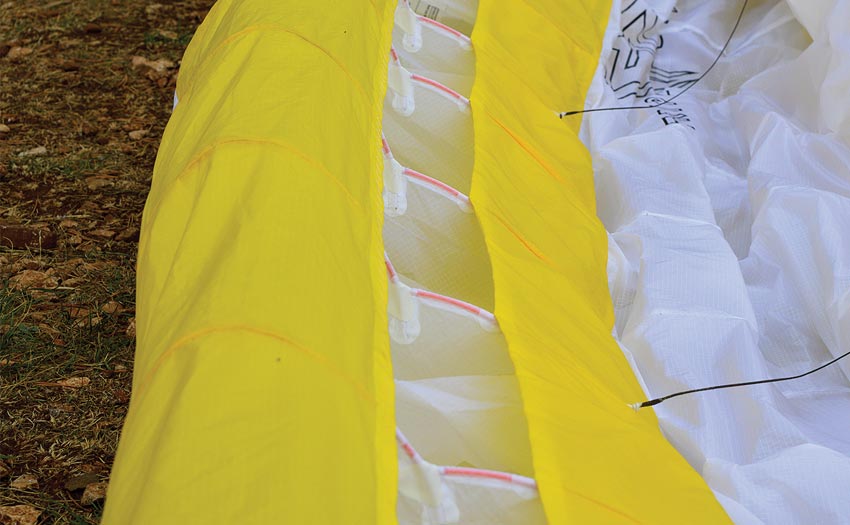
Stronger conditions
Back at one of my local sites, Gourdon, I finally had some decent conditions where I could get enough height to play with some full-on spirals and collapses. As with any test flight I entered the spiral cautiously. I threw in my usual amount of EN-C weightshift and let out a laugh as the wing accelerated quickly. I eased off the weighshift a little and moderated the spiral with outer brake.
I tried the two exit styles, one with no input and one where I made a dynamic input to straighten up quickly. With no input other than hands-up the wing performed as you would expect for a B. It only needed a little damping to avoid an overshoot. The dynamic entry and exit created more energy as I straightened up, but again only a small overshoot. Pulling 50% and full-frontal collapses was fairly uneventful. I was expecting more roll into the deflated side but was able to maintain course. I pumped out the collapse as a matter of habit but if I waited a little longer it came out spontaneously. Big ears were easy and as ever I added a little speedbar to keep the wing moving forward with the ears in.
On the bar
In six hours of alpine flying I used the speedbar many times. I tried to simulate classic speedbar panic situations made by beginners, and used more advanced techniques. Where a newer pilot is on bar their first reaction when they enter a thermal is to let up the bar immediately. This exacerbates the pitch back of the wing and, rather than improve the entry to the climb, makes it worse. In this situation the Knight definitely preferred that I stay on the bar and then slowly let it off. In Slovenia where the Valics fly there are many ridges where you can blast up and down at full speed. Flying in a straight line and porpoising along for kilometres you waste time if you fully come off speedbar. The Knight has good travel and light to moderate pressure, which makes active speedbar use really accessible even to intermediate pilots. I made several into-wind transitions in convergence and on a fairly hostile ridge run and the wing’s pitch stability and usable speed was one of its biggest assets. At first I thought the Harken pulleys looked a little cheap but they definitely work very smoothly and are robust. There are no rear riser handles, but I barely needed to dab the rear risers to control pitch as I blasted along.
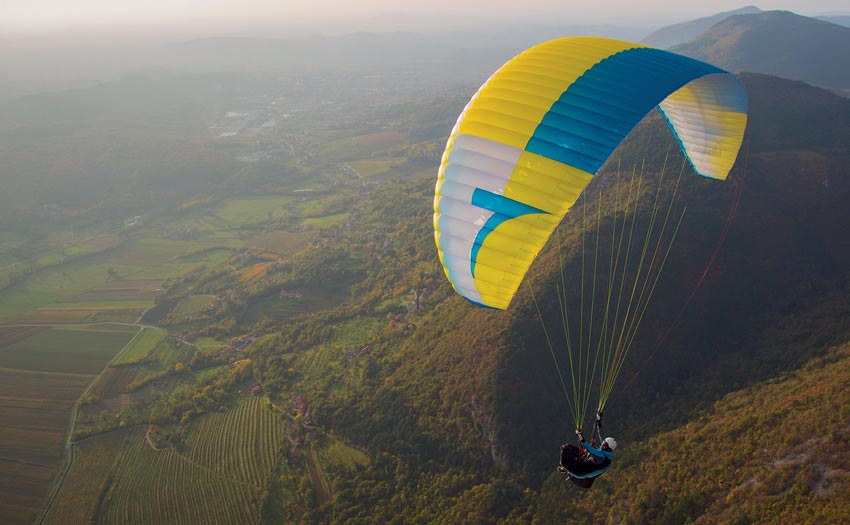
Character
The first few hours of my flying were in turbulent air, so I was keen to fly in better air to get a better feel for its character. In the rough and broken stuff the wing rolled more than I expected but that roll became an asset when I found a small core to escape skyward. In lighter conditions with smooth thermals I found that the wing can be flown efficiently with practice. When you don’t feel like being efficient you can have a lot of fun! Slower-speed flying is something really important, especially at soaring sites where pilots need to make repeated slope and top landings. I made several top landings with the Knight and found there was a nice margin to play with before the stall-point. One day I played with this and just hovered 30cm off the ground for a minute or two in a gentle breeze. It was great to have such precision in an EN-B.
Conclusions
The Knight is a well-thoughtout low EN-B with excellent handling, climb rate and overall performance. Perhaps it is one of the best in its class. I’d say the wing’s roll rate still makes it a step up for a pilot coming from EN A. But with a cautious approach pilots will come to love it. I learnt to drive in a mini. Once you understand what good handling is and why it is useful, you never want a car or a wing without it! The wing has more than enough performance into wind and accelerated to keep up with EN-C wings from a few years ago. Being able to modulate bar in rougher air meant I could easily keep up with my friends on high-Bs and lower-end C wings.
There are other EN-Bs that give a more damped-out ride such as Advance’s Epsilon 8 (review here). The Knight is still very dependable and predictable but to me the selling points are the personality, agility and into-wind performance. Once you undertand the limits of the wing it can be thrown around the sky like a go-kart and also flown very efficiently when the thermals are weak and the cores are elusive.
Definitely one for the shortlist.
****
Manufacturer’s Specifications
What 777 say: “Designed to make the entry into the world of thermalling and XC flying as easy, intuitive and safe as possible”
Use: Second wing, learning to fly XC
Pilot level: Intermediate pilots +
Sizes: S, MS, ML, L
Flat area (m²): 23.7, 26.4, 28, 29.8
Certified take-off weight (kg): 65-80, 75-95, 85-105, 100-120
Glider weight (kg): n/a, 4.9, 5.3, n/a
Cells: 51
Flat aspect ratio: 5.4
Certification: EN/LTF B
Read Brian’s review of the lightweight version of the Knight, the K-Light, here.
To stay up to date and read our reviews first, subscribe to Cross Country


